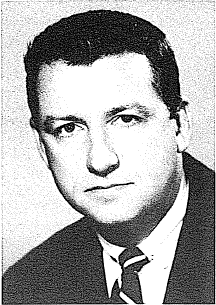
The Frank J. Remington Center could be justifiably so named simply to recognize the accomplishments of a kind and brilliant man who gave so much to so many people in the law school and far beyond its walls. But the reason for the name goes beyond the honorific: it represents the aspiration of the law school to have a place dedicated to Professor Remington's vision of excellence in legal education, research, and professional and public service.
Professor Remington's teaching interest focused on criminal law early in his career; the way he pursued that interest beyond the classroom illustrates his way of fulfilling the academic's role. In 1949, the same year he began teaching at the law school, Professor Remington became one of the principals involved in a project of the Wisconsin Legislative Council to rewrite the state's substantive criminal statutes. In 1951, Professor Remington's work in Wisconsin led to an invitation to participate in the American Law Institute's Model Penal Code project, which became the nation's preeminent codification effort. The Wisconsin revision resulted in a new criminal code enacted in 1956, and in 1959 Professor Remington began to work with state judges in a project to prepare uniform jury instructions for offenses defined in the new code. His interest in criminal law codification continued in the 1980s with work on comprehensive Wisconsin revisions dealing with crimes against children and homicide offenses. Professor Remington's teaching was enriched by his work in these projects and his contributions to the experiences of clinical students were made possible by the depth and insight resulting from on his academic work.
Professor Remington's other principal teaching interest was criminal justice administration, a field he virtually invented. The guiding principle of his approach was that the practices of and decisions by police, prosecutors, defense lawyers, and judges were as important, if not more important, to study as statutes, rules, and court decisions. This principle was also pursued outside the classroom, where Professor Remington led and participated in numerous national research efforts, commissions, and advisory groups of the highest stature. And it was outside the classroom - that is, outside the conventional classroom - that Professor Remington did his most effective teaching.
Perhaps a word that best sums up Professor Frank Remington's approach to criminal law matters is "integration": combining academic work with work outside the law school; combining consideration of the law on the books with how that law is applied in action; and, perhaps most importantly, combining substantive knowledge and technical proficiency with that elusive but preeminently important trait of the accomplished lawyer, "good judgment."
So, to understand the nature and aspirations of the Remington Center, one needs to reflect on the distinctive career and vision of Frank J. Remington. The Center is one concrete manifestation of that vision and one important product of that career.
For a complete review of Frank Remington's career in the field of criminal law, see Frank J. Remington - Contributions to Criminal Justice, by Edward L. Kimball. University of Wisconsin Law School, 1994.
